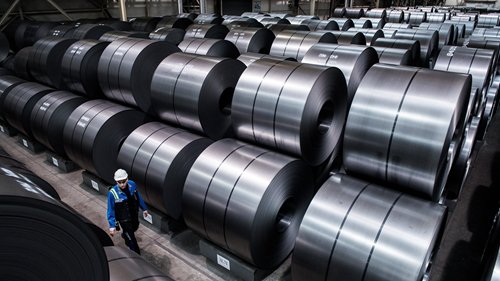Since last week, many provinces and cities in China have imposed power restrictions, requiring factories and enterprises to “open two and stop five” or even “open one and stop six.” That is to say, only two days or even one day can be operated within 7 days a week, and power outages are mandatory for the rest of the week. This has caused a number of industries, including the stainless steel industry, to enter a state of near shutdown. Upstream steel mills cannot supply products, and mid-downstream plants cannot process and produce them. Even if the price of stainless steel rises again and again, it will not help.
So why does the government require electricity restrictions?
- Bear the brunt of the energy reduction policy announced by the Chinese government in May this year.
Its purpose is to curb excessive production capacity, while saving energy, reducing pollutants and greenhouse gas emissions from the source, transforming the mode of economic development, and improving the level of green development.
As soon as this policy was introduced, major steel mills announced their energy reduction plans one after another. According to statistics, major steel mills will reduce their production of various stainless steel raw materials by at least 670,000 tons in October. Previously, from May to now, it is estimated that the production capacity of steel plants has been reduced by at least 5 million tons. - Another important reason is the rise in international energy prices.
Coking coal futures prices on the Dalian Commodity Exchange rose by 130.6% for the full year of 2021, after rising by 22% in September. The rise in the price of coking coal has led to an upside-down of the price of thermal power generation. The price of the resource itself is much higher than the price of electricity. Now every kilowatt-hour of electricity produced by the power company is at a loss. The socialist nature of China does not allow power companies to adjust electricity prices, and must first ensure that residents use electricity, so restricting or even suspending industrial electricity use is the best and most direct way today.
At the same time, based on the carbon neutral strategy, the state stipulates that the carbon emission peak should be reached in 2030 and fall in the following years. Each province has arranged carbon emission indicators. When the set target is reached or exceeded in the first half of the year, relevant measures need to be taken to control the second half of the year. .
- Up to now, the epidemic in Southeast Asian countries has not been well controlled, and production orders have been shifted to China, which has also led to a further increase in the production capacity of Chinese factories.
But in fact, China is consuming resources in exchange for low income. The income of commodity sales and export is far less than the cost of resource extraction and pollution control. This also fulfills the policy of reducing energy and production that the Chinese government promulgated in May of this year. - The game between the Chinese government and the United States, counterattack under the economic repression of the US’s massive printing of money.
As China’s productivity is stable, but domestic consumption cannot be improved, commodities are continuously sent to the United States to earn foreign exchange. However, when China’s productivity is declining and domestic consumption is fixed, prices are raised to the United States in this way to give the United States greater inflationary pressure.
Under the influence of various factors, it is expected that the restriction on electricity consumption will continue until March 2022, that is, after the Chinese New Year holiday.



